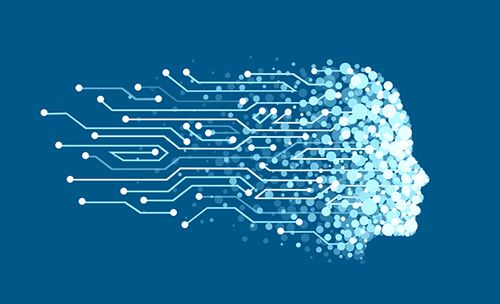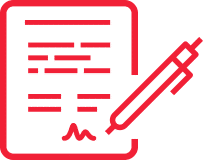Menu
USPTO confirms AI cannot be listed as inventor in a patent application
April 28th, 2020

Artificial intelligence (AI) promises to be one of the most important innovations that powers many disruptive ventures and brings exciting changes to our legal system. AI is already influencing the way we work, travel, shop, and play.
From autonomous vehicles to improved medical diagnostics to voice assistants, AI is increasingly at the forefront of innovation. With respect to AI inventions to date, the USPTO has issued thousands of patents on AI technologies, and the future grows more exciting every day as new AI technologies are developed. However, with excitement comes change and the potential for uncertainty that is testing the boundaries of US Patent law.
PATENT APPLICATION FILED LISTING AI AS INVENTOR
In July 2019, US Patent Application No. 16/524,350 titled “Devices and Methods for Attracting Enhanced Attention” was filed at the USPTO listing a single inventor with the given name "[DABUS]" and the family name "(Invention generated by artificial intelligence)." The application also identified the Applicant and the legal representative of DABUS as the Assignee "Stephen L. Thaler."
The USPTO issued a Notice to File Missing Parts (Notice) that indicated that the Applicant Data Sheet (ADS) "did not identify each inventor by his or her legal name." A petition was filed requesting supervisory review of the Notice. The USPTO issued a Decision on the petition explaining that, under current law, only natural persons may be named as inventors in a patent application.
PETITIONER ARGUED THAT AI SHOULD BE LISTED AS INVENTOR
Petitioner asserted that the invention was generated by a machine named "DABUS," and this "creativity machine" is programmed as a series of neural networks that have been trained with general information in the field of endeavor to independently create the invention. He further asserted that DABUS was not created to solve any particular problem, and it was not trained on any special data relevant to the instant invention. Instead, it was the machine, not a person, which recognized the novelty and salience of the instant invention. Petitioner contended that inventorship should not be limited to natural persons and, therefore, the naming of DABUS as the inventor in the above-identified application was proper.
USPTO STATES THAT ONLY NATURAL PERSON CAN BE LISTED AS INVENTOR
Under 35 U.S.C. § 115(a), "[a]n application for patent ... shall include, or be amended to include, the name of the inventor for any invention claimed in the application." An "inventor" is defined in 35 U.S.C. § 100(a) as "the individual or, if a joint invention, the individuals collectively who invented or discovered the subject matter of the invention."
The USPTO began its analysis by referring to 35 U.S.C. § 101 that states "Whoever invents or discovers any new and useful process, machine, manufacture, or composition of matter ... may obtain a patent therefore". "Whoever" suggests a natural person. 35 U.S.C. § 115 similarly refers to individuals and uses pronouns specific to natural persons – “himself” and “herself” – when referring to the "individual" who believes himself or herself to be the original inventor or an original joint inventor of a claimed invention in the application. It further states that the inventor who executes an oath or declaration must be a "person." Other sections of Title 35 take the same approach. Therefore, interpreting "inventor" broadly to encompass machines would contradict the plain reading of the patent statutes that refer to persons and individuals.
The USPTO then referred to Federal Circuit case law to explain that the patent laws require an inventor be a natural person. For example, in Univ. of Utah v. Max-Planck-Gesellschafl zur Forderung der Wissenschaften e.V., the Federal Circuit explained that a state could not be an inventor, and the inventors of a patent are "the individual or, if a joint invention, the individuals collectively who invented or discovered the subject matter of the invention." The Court further noted that “[c]onception is the touchstone of inventorship, the completion of the mental part of invention.” To perform this mental act, inventors must be natural persons and cannot be corporations or sovereigns. Similarly, when explaining the distinction between inventorship and ownership of an invention by a corporation, the Federal Circuit in an earlier decision, Beech Aircraft Corp. v. EDO Corp., stated that: "only natural persons can be ‘inventors.’”
While these Federal Circuit decisions are in the context of states and corporations, respectively, the USPTO clarified that the discussion of conception as being a "formation in the mind of the inventor" and a "mental act" was equally applicable to machines and indicated that conception – the touchstone of inventorship – must be performed by a natural person.
The USPTO finally referred to Title 37 of the Code of Federal Regulations and the Manual of Patent Examining Procedure ("MPEP"), explaining that the threshold question for inventorship is "conception." The MPEP defines "conception" as "the complete performance of the mental part of the inventive act" and it is "the formation in the mind of the inventor of a definite and permanent idea of the complete and operative invention as it is thereafter to be applied in practice." Again, the USPTO states that the use of terms such as "mental" and "mind" in the MPEP indicates that conception must be performed by a natural person.
Accordingly, because the patent application named a machine, "[DABUS] (Invention generated by artificial intelligence)," as the inventor, and because current statutes, case law, and USPTO regulations and rules limit inventorship to natural persons, the USPTO concluded that the patent application does not comply with 35 U.S.C. § 115(a).
Interestingly, the Petitioner also argued that the USPTO had granted patents relating to the DABUS machine and, therefore, implicitly legalized the process by which DABUS arrives at an invention for this patent application. The USPTO rejected that argument stating that the granting of a patent for an invention that covers a machine does not mean that the patent statutes provide for that machine to be listed as an inventor in another patent application – any more than a patent for a camera allows the camera hold a copyright.
Scientists and lawyers from around the world are fighting with patent offices over who deserves credit for new inventions churned out by artificial intelligence algorithms illustrating how our legal systems are unprepared to accommodate new, emerging technologies.
As it stands, AI has no legal claim to a patent on its algorithm’s inventions.
Categories: Patents








